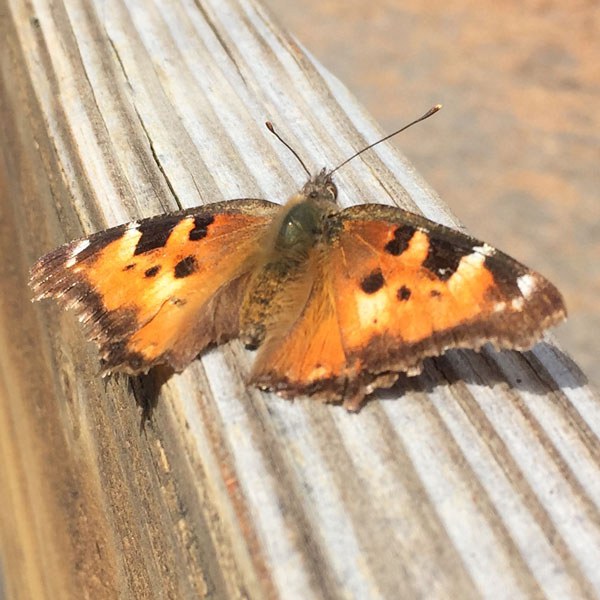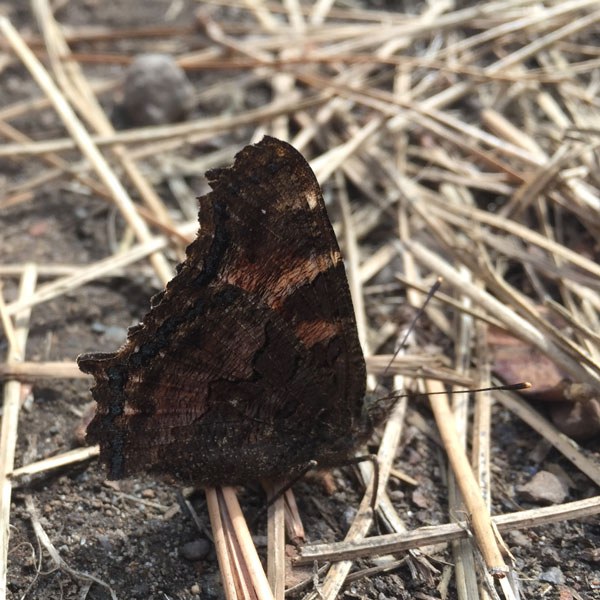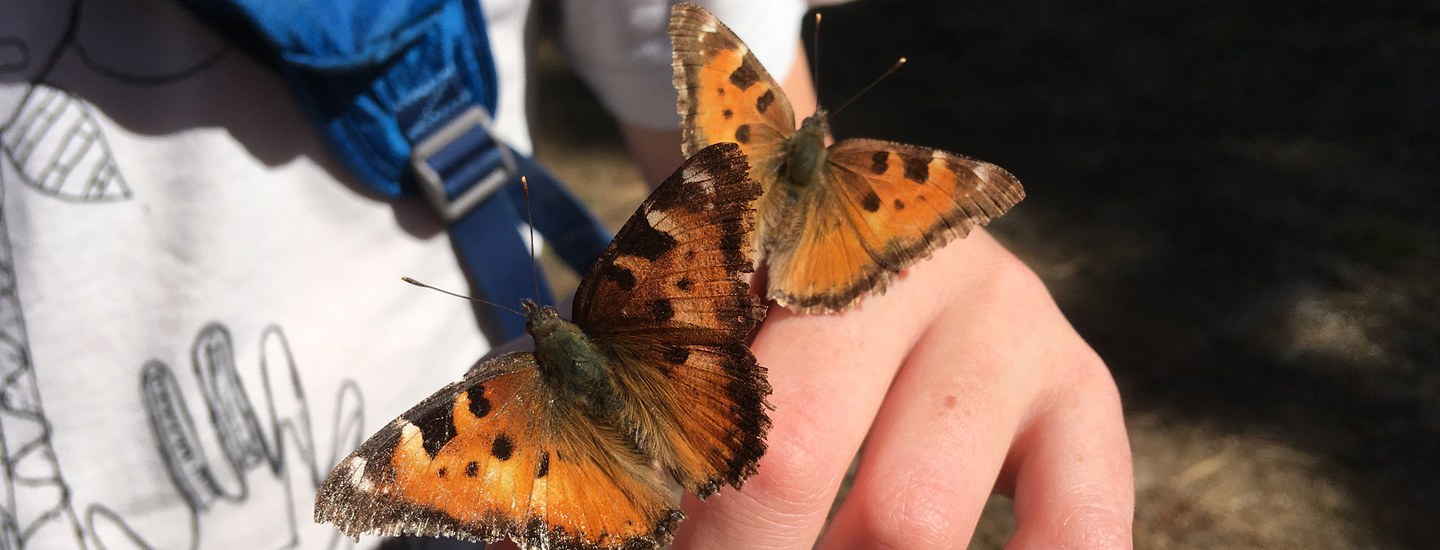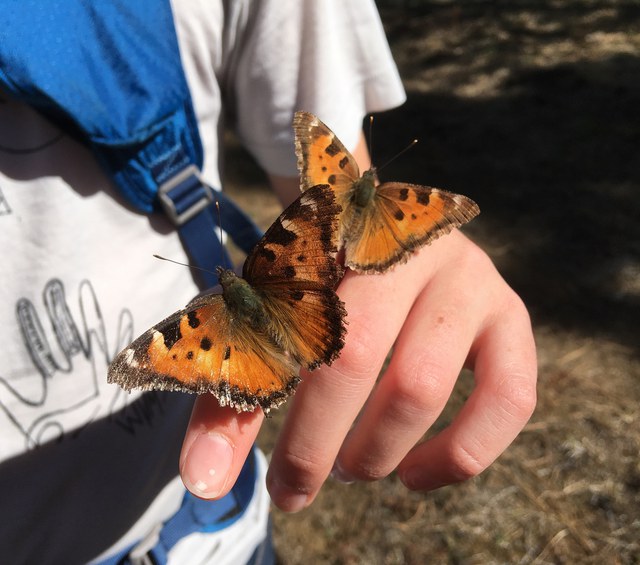What are all of those orange butterflies flying around the roads and trails of Central Oregon? There’s so many of them!
If you have said that in the past couple of weeks, I am right there with you. Every time I go for a hike, I see dozens upon dozens of these orange butterflies. So what are they and why are there hundreds of them everywhere?

California tortoiseshells are very common in Central Oregon and are often seen starting in late winter or early spring through fall. Tortoiseshells rely on snowbrush (Ceanothus velutinus) as their host plants. This large shrub is a common understory plant in our pine forests that, when blooming, is covered in masses of white flowers. Tortoiseshells will lay their eggs in bunches on the snowbrush and then the caterpillars will eat the leaves once they emerge. Once those caterpillars transform into adult butterflies, Central Oregon will have a surge of California tortoiseshells flitting about in the later summer through early fall. Finally, these orange beauties overwinter as adults, finding hiding places behind peeling bark, in crevices in buildings, wood piles, and other sheltered locations. This is why we also often see them again in late winter early spring. On warm spring days, they emerge from their hiding places and fly about with tattered wings, looking slightly faded because they've survived a hard winter.

How can I help these butterflies during their boom cycle? While California tortoiseshells are hard to miss if you are driving mountain roads, you can slow down to help them get out of the way more easily. Then, we recommend taking a wander along a trail to watch them fly up in a cloud all around you!
Learn more:
- Overwintering Butterflies
- Five Butterflies That are Not Monarchs
- Tips for an Excellent Butterfly Expedition


